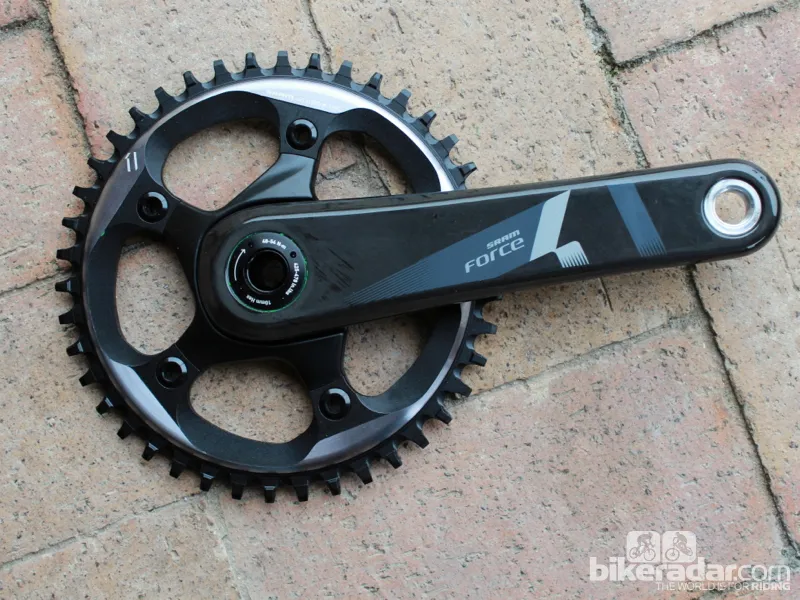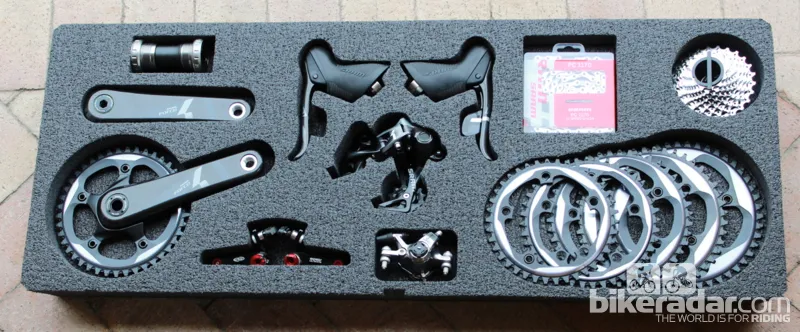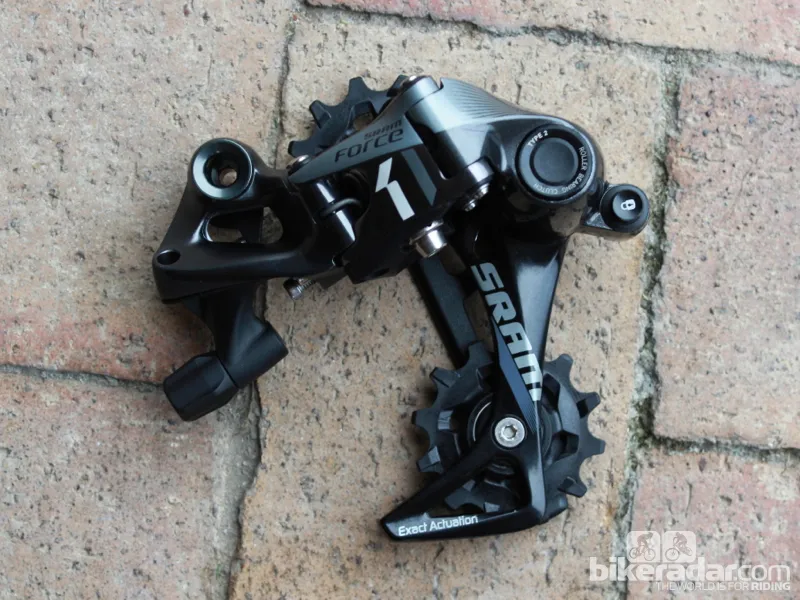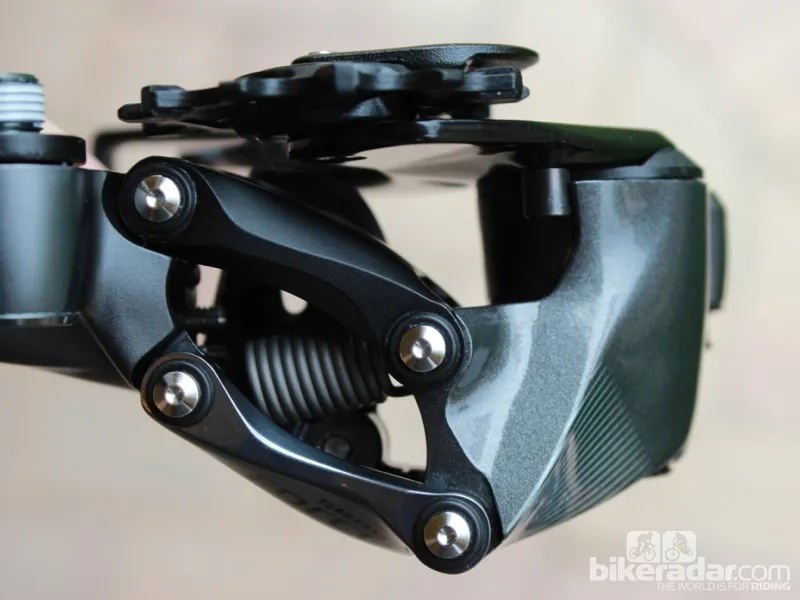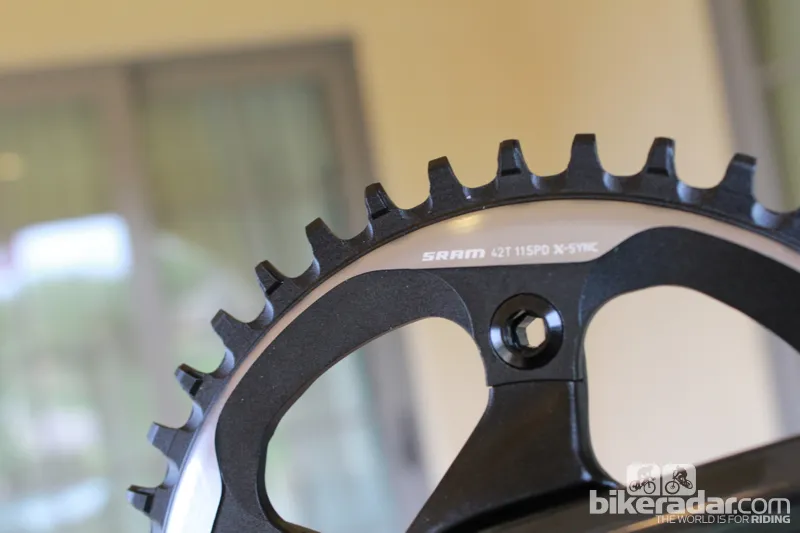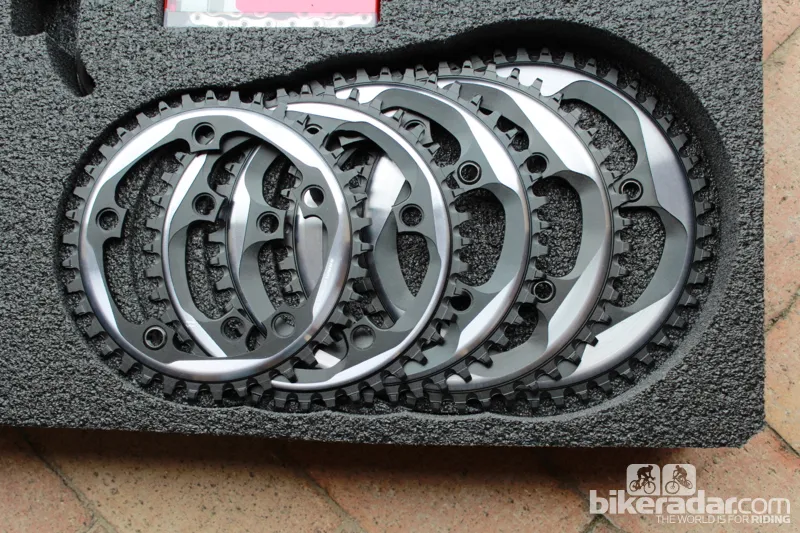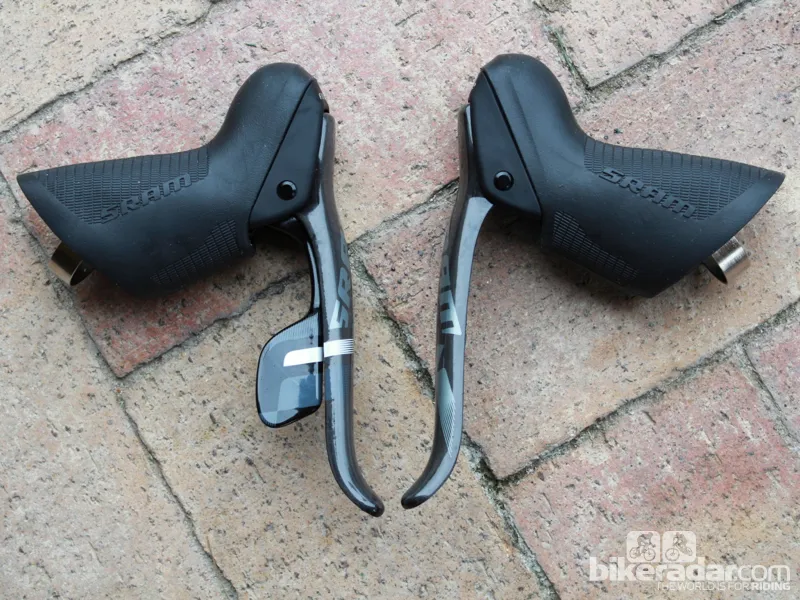After finding success with its single chainring mountain bike groups, SRAM today launched Force CX1, a modular one-by cyclocross group. Using a Type-2 clutch-style derailleur similar to its MTB brethren, CX1 is compatible with current 10- and 11-speed SRAM road groups, so riders can upgrade with just the rear derailleur and the front ring, should they desire. SRAM is also selling a CX1 crank and shift levers, although the latter are simply modified Force 22 levers.
From mountain and cyclocross… to crits and triathlon?
By jettisoning the second chainring, SRAM has been able to discard some weight and complexity, offering riders a cleaner, lighter bike. By using a clutch-style derailleur that pulls back heartily on the chain to keep it taut, plus a narrow/wide chainring to keep the chain on the ring, drivetrain performance can also be improved. Dropped chains and even the sound of chainslap are largely removed from the equation, no matter how rough the ride gets. The tradeoff, of course, is the parameters on gearing. An engineer’s choices are to give up a little bit on both ends of the range, or create a monstrous cassette.
With CX1, SRAM went for the latter with an 11-32T cassette, which provides a lower gear (when using a 42T ring) than with a 34T ring and an 11-25T cassette that you might find on a cyclocross bike with a standard compact crankset.
JP McCarthy is SRAM’s road product manager and a veteran of the company in various roles. He says SRAM is keen to see how many types of bikes can be built with 1x drivetrains.
“Our first preproduction 1x systems won the [cross-country] Olympics,” McCarthy said. “And we equipped 50,000 bikes with it in the first 12 months. That surpassed our expectations. We knew we had the magic. We knew that we had a system that we and our riders loved, but we were surprised by the widespread demand.”
Earlier this month, SRAM announced a downhill version of its XO1 groupset.
“We know that the 1x drivetrain has long legs—a lot of applications,” McCarthy said, rattling of cyclocross, triathlon and even lunch-ride bikes as potential examples. “E-bike manufacturers are among the loudest proponents. But what we are delivering this year is cyclocross. There is a pretty low barrier to entry. We understand the gearing range. We can supply the perfect system for ’cross this year. When it comes to other applications, we are investigating.”
Inside the CX1 group
The 261g (claimed) CX1 rear derailleur employs a straight parallelogram, unlike modern road bikes that use a slant parallelogram to maintain the distance between the guide pulley and the cassette as the derailleur moves up and down the cogs.
The straight parallelogram — “which is an old-fashioned design,” McCarthy notes — uses chain tension and chain length to maintain the proper gap, a situation that’s only tenable with a single front ring and the strong, rearward pull of the clutch spring.
Because the clutch is so strong, SRAM has a simple lockout for the lower pulley cage for easy wheel changes. “There is no spring at the B pivot. I’ve found that the cage lock makes for an easy wheel change now that I’m dealing with disc-equipped bikes,” McCarthy said. “With no chain tension, you can really focus on getting the rotor aligned.”
Once the wheel is back on, the rider just pushes the derailleur cage forward by hand to release the lock.
The CX1 derailleur allows for a small amount of side-to-side movement, but primarily keeps the chain firmly in place. The design is “90 percent of our mountain-bike derailleur, with some keys differences,” McCarthy said.
One difference is CX1’s barrel adjuster for cable tunings, just like on a standard road derailleur.
Another difference is the cable pull — SRAM retained the same ‘exact actuation’ on CX1 as on its 10-speed road derailleurs, so the derailleur will work with 10- and 11-speed SRAM systems (shifters, chains, wheels).
“This is huge in ’cross where guys have invested in multiple wheelsets,” McCarthy said.
The derailleur pulleys have 12 teeth instead of 11, McCarthy said, to maintain an even number for the alternating narrow/wide design.
The left-hand control is standard Force lever with the shift mechanics (and 40g) removed. The right-hand lever is a standard Force lever with a different graphic.
The existing PG-1170 cassette, unlike the solid early Red cassette, has plenty of holes for mud, snow and muck clearance. And the PC-1170 chain will be suggested with the CX1 parts, but all SRAM 11-speed chains are compatible with CX1.
The CX1 crank has uses the 110mm bolt circle diameter with an X-Sync chainring. Claimed weight for the crank, in a 172.5mm length with a 42T ring is 644g in the BB30 model. “It really makes the whole drivetrain more secure, going from a shifting ring to a ring designed to keep the chain on,” McCarthy said. “The design is virtually the same as the mountain [XX1 and X01] crank and ring, with tall teeth that have thick/thin features.”
X-Sync chainring options are 38, 40, 42, 44 and 46. Weight ranges from 70 to 100g, depending on the size.
“Personally, I like a 38 or a 40,” McCarthy said. “For virtually all racers, that’s all you need. I’ve been riding sometimes with an 11-26 or an 11-28. When I take it mountain bike riding, I’ll put on a 32.”
At the US national cyclocross championships in January, Ryan Trebon rode the CX1 group with 42-tooth ring and the 11-32 cassette to second place finish.
Pricing and weights
- Force CX1 Rear Derailleur - US$235/€209/£178, 261g
- Force CX1 GXP Crank (chainring and BB cups not included) - US$207/€184/£157, 710g
- Force CX1 BB30 Crank (chainring and bearings not included) - US$249/€221/£189, 542g
- Force CX1 X-Sync Chainring - from US$126/€112/£96 to US$152/€135/£115, 70-100g
- Force CX1 Left Brake Lever - US$113/€100/£86, 119g
- Force CX1 Right Shift/Brake Lever - US$193/€172/£147, 158g
Australian pricing has not yet been released.
The fine print
There are things CX1 cannot do, and other things that are doable but trickier with CX1 than standard road groups.
CX1 can’t do two chainrings. The clutch derailleur is happy with any size ring, as long as its singular. But changing that ring is a bit more complicated than on another bike, as chain length needs to be well-matched to the gearing.
Normally, mechanics and riders wrap a new chain around the big cog and the big ring and add two full lengths. With CX1, the formula is chain ring, small cog, “plus a little,” McCarthy said. “We don’t want to get into that. But your SRAM dealer will be able to handle it.” However, shifting cassettes within a reasonable range, say going from a 11-26 to 11-32, for example, won’t require changing the chain.
Still, the big score for riders is the compatibility. In cyclocross, where many riders use second-hand parts from their road bikes, being able to upgrade to a taut system with just two parts could be well received.
“Racers with 10-speed Force can just buy the X-Sync chainring and CX1 rear derailleur and be good to go,” McCarthy said.
Time will tell how far SRAM’s 1x legacy expands.
